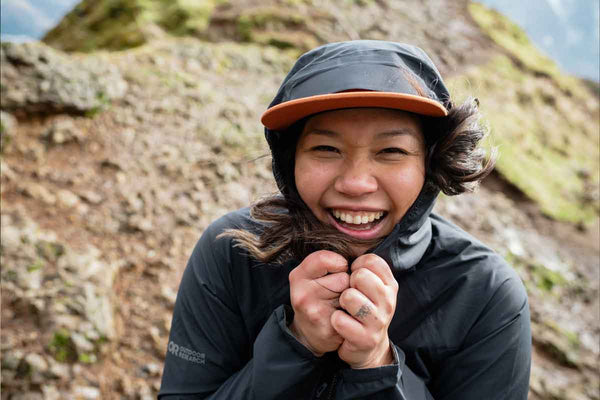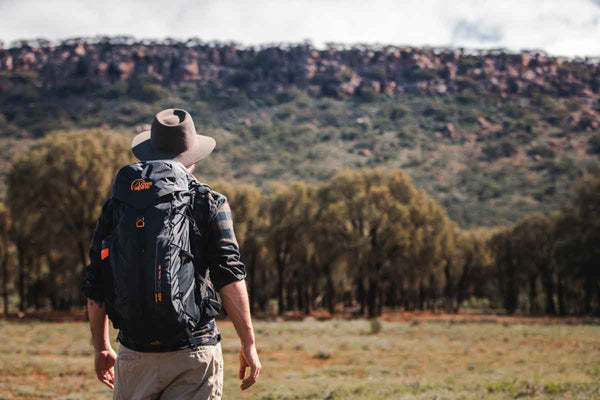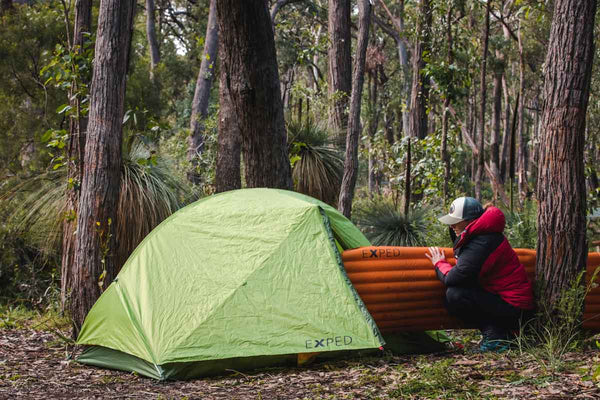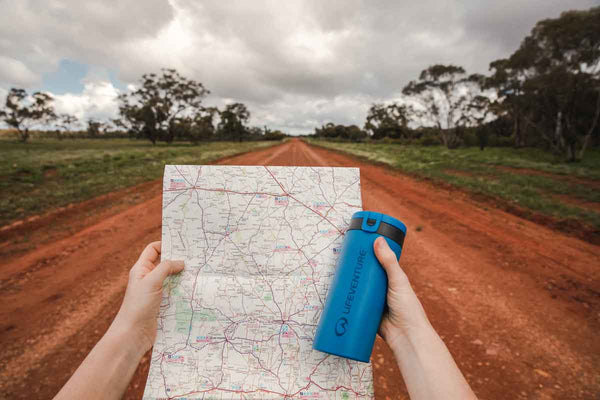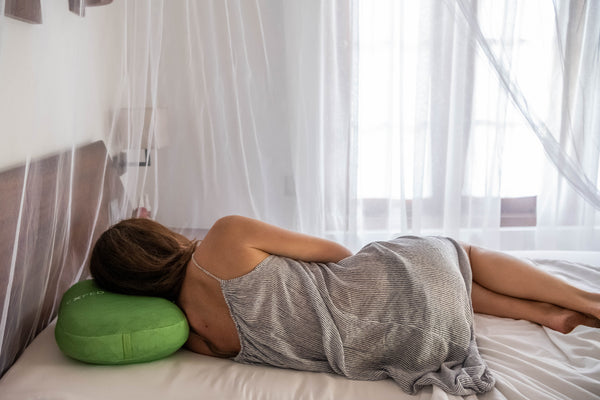
Health & Hygiene Guide
Keeping Insects at Bay
Repelling insects is necessary for health reasons, and sometimes for your sanity! There is nothing worse than hearing the unmistakable whine of a mosquito in the middle of the night or a face-full of flies on a walking track. There is a broad range of products that will either keep insects at bay using netting, or chemical treatments that can be applied to your skin.
Mosquito Nets
There are a few important points to consider when purchasing a mosquito net. First, the net must be strong enough to cope with the rigours of travel. This means the net should be made of a strong enough synthetic (normally polyester) fibre which does not allow distortion of the net holes. Ideally an ultra-fine section of net should surround the base as this will prevent crawling insects from entering the net area.
Secondly, it is wise to get the net pre-treated with a chemical that will kill insects on contact. There are two options; Permethrin and Deltamethrin. The most popular is permethrin as it doesn’t cause skin irritations. It is possible to treat a net yourself however laboratories use emulsifiers to enhance the bonding between the permethrin and the polyester (which is more absorbent than nylon). This means the treatment will last longer.
Finally, choose a white net as colour dyes will reduce the efficacy of any chemical treatments, and mosquitoes dislike landing on light colours against which they are easily seen.
Fly Head Nets
There are many sorts of flying insect that can reduce the enjoyment of walking. Perhaps the most disliked are New Zealand’s sand flies and Australia’s Blow Flies. Chemical repellents just don’t seem to discourage either of these flies and the only way to keep them out of your face is a head net. These nets can also be chemically treated which will kill other small flying insects.
Repellents
All repellents sold in Australia have to be registered with the Australian Pesticides and Veterinary Medicines Authority (APVMA), and any claims of efficacy have to be proved in standard testing. Different brands have different chemical concentrations of the active ingredients which generally indicate duration of effect rather than greater repellency.
[for more information on mosquito repellents see this paper on the COMPARATIVE EFFICACY OF INSECT REPELLENTS AGAINST MOSQUITO BITES]
Synthetic Repellents
- N,N-diethyl-m-toluamide (DEET) also shown on labels as diethyltoluamide. DEET is the most commonly used repellent and is very effective. Choosing the lowest DEET concentration that still suits your purpose is recommended, because DEET can cause problems such as dermatitis, especially if used in large quantities for an extended period of time (such as several days in a row). In rare cases it has been linked to encephalopathy and death, mainly in children who had been exposed to excessive and prolonged use. Children absorb chemicals through their skin more readily than adults, which is why lower-concentration products are available for them.
- [A recent study also showed that combining sunscreens and DEET could carry some risk. Oxybenzone, an active ingredient in some sunscreens, increases the permeation rate for DEET when the two are mixed together: this means the skin absorbs more DEET than it would normally. This may increase the risk of high blood pressure.]
- [Some countries have banned high-concentration DEET products for health reasons: Canada, for example, has banned products with more than 30%. DEET can also dissolve plastic, such as on spectacle frames, watches and mobile phones, so try not to let plastic items touch DEET or DEET-treated skin.]
- Di-n-propyl isocinchomeronate (DPI) is a fly repellent and isn't very toxic.
- Permethrin is an insecticide rather than a repellent. It's a pyrethroid synthetic pyrethrin, mainly used to treat fabric such as clothing, shoes and tents.
- Deltamethrin is also an insecticide and should not be used in contact with your skin.
- Piperonyl butoxide and N-octyl bicycloheptene dicarboximide (OBD) are synergists, which enhance the effect of the main repellent ingredient.
- Triclosan is an antibacterial agent, added to repellents to help disinfect insect bites. It can cause irritation to sensitive skin.
Natural repellents
Natural repellents are rarely more than 20% as effective as synthetic alternatives. Common natural ingredients are:
- Citronella (aka citronellal) is a common ingredient in insect-repellent candles and burners. Citronella is also commonly used in personal insect repellents. It's derived from certain cultivated grasses.
- Lemon eucalyptus oil has been shown to be as effective against mosquitoes as low-concentration DEET repellents.
- Lemon-scented tea-tree (Leptospermum petersonii leaf oil) can be used as a repellent and also has antibacterial properties.
- Melaleuca oil (aka tea-tree oil) is usually derived from leaves of Melaleuca alternifolia. It has strong antibacterial and antifungal properties and is a traditional Aboriginal insect repellent.
- Pyrethrum/pyrethrins are a natural repellent/insecticide extracted from petals of a type of chrysanthemum.
First Aid
Whenever you venture into the outdoors, or travel overseas it is always wise to carry a first aid kit. There are two important criteria to a medical kit; how many people could you possibly need to treat, and how far away is emergency assistance. So for a traveller who is roaming around a foreign country the only medical requirements are those for minor accidents and potential illnesses. However, a group that is wandering through the wilderness for a month is going to need a more extensive array of treatments and medications.
Equip Health Systems (the following information is reproduced with thanks from www.equip.com.au) produce a range of kits that are designed for a range of scenarios:
The REC 1 has been specifically designed to carry the bare essentials. Will effectively treat small burns and minor wounds.
- The REC 1 is carry-on luggage safe for travellers i.e. it does not contain any items that are not approved by airport security.
- Features a clip that customers can use to clip into larger first aid kits or attach to their belt, hand bag or back pack.
- Weight: 55g
The REC 2 is designed for solo outings and day trips, it is a light and compact kit that contains a more complex range of items than the REC 1.
- Will effectively treat a range of injuries such abrasions, cuts and burns.
- The REC 2 features two clips that allow it to be clipped into larger Equip first aid kits.
- Weight: 125g
The REC 3 is a perfect kit for overseas travellers and those who require a kit for specific activities.
- The REC 3 contains a more extensive inventory designed for treating mild to serious abrasions, cuts, bites, sprains and strains. It is possible to irrigate eyes and wounds with this kit.
- The REC 3 has a substantial bag which is ideal for customisation.
- Weight: 275g
The PRO 1 is a comprehensive first aid kit perfect for serious weekend travellers. It has a similar layout to the REC3, but is larger.
- Compact, versatile and filled with vital equipment the PRO 1 allows you to be prepared for a variety of situations ranging from snakebites, eye injuries, blisters and burns.
- This kit is ideal of customisation.
- Weight: 355g
The PRO 2 has the necessary lightweight professional medical equipment to service a medium sized group on trips into remote areas.
- Will treat a variety of situations ranging from snakebites, eye injuries, blisters and burns.
- The PRO 2 has an extra storage pocket (in comparison to the PRO 1) that folds down from the kit allowing easy and quick identification of medical equipment in an emergency.
- Weight: 700g
The PRO 3 is designed for large groups spending long periods in remote environments on land or at sea. This extensive first aid kit contains the wish list of quality medical items as preferred by our Wilderness Medicine Institute instructors (doctors, nurses & paramedics). This kit is suitable for expeditions, world sailing and remote worksites.
- Will treat all first aid situations for large groups whom are away from medical care for a lengthy period.
- This extensive first aid kit features the wish list of quality medical items as preferred by Equip's Wilderness First Aid Institute instructors. For details please visit www.equip.com.au
- Weight: 900g

